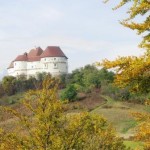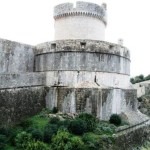Ban Jelacic Square, Zagreb, Croatia
By Victor Block
As I strolled along ancient ramparts that encircle a small medieval city, the view changed with each twist and turn. On one side was a labyrinth of narrow streets lined by tile roofed stone buildings. In the other direction were stunning views of the Adriatic Sea.
Not far away, I traveled through a terrain of rugged mountains and deep canyons.
Crisscrossing four miniscule countries that once were part of Yugoslavia, I delved into intriguing chapters of history, gazed at breathtaking scenery and checked out local life in tiny towns and magnificent cities. That nation was born following World War I but because a number of different ethnic groups were patched together, the seeds of conflict were sewn from the start.
Present-day Croatia, Montenegro, Bosnia and Herzegovina, and Slovenia were part of Yugoslavia when it battled Germany in World War II, under the leadership of Josip Broz Tito. After the war, he headed a socialist government until his death in 1980. While authoritarian, Tito earned a reputation as a benevolent dictator who kept ethnic tensions in check. Following his death, those differences flared, the country splintered along the borders of the former republics, and fighting raged in what became known as the Bosnian War.
While the peace agreement which ended the fighting didn’t erase ethnic tensions, today they’re expressed with words rather than war. Visitors hear good-natured but pointed jokes about people in neighboring states who once were fellow countrymen.
The tiny sizes of the countries – the four together have a total area about equal to New York State – makes traveling between them convenient. At the same time that similarities become evident, so do interesting differences.
One attraction is the appeal of cities. Dubrovnik in Croatia is one of the most prominent Mediterranean tourist resorts, with an Old Town neighborhood which exudes a Middle Ages atmosphere.
The main feature is ancient fortified walls that encircle the old city, punctuated by turrets and towers. Walking along the top of the fortification provides the dramatic views which I enjoyed.
Zagreb, Croatia’s capital, has been a cultural center since the Middle Ages and boasts an inviting array of museums, many perched in the hilly, historical Upper Town. The pedestrian-friendly Lower Town has inviting squares and parks where locals gather to socialize at outdoor cafes.
Ljubljana (pronounced Loo-blee-AH-na) is a bustling urban center with broad promenades. Statues and a section of stone wall are reminders that this was the site of a Roman town beginning in 14 A.D. Overlooking the setting from a hilltop is Ljubljana Castle, which dates back to the early 12th century.
Smaller but equally as enticing are towns and villages. Karanac in Croatia exemplifies rural charm. It’s located in the “Bread Basket” of Croatia, and grapes have been grown on the surrounding hills since Roman times.
Hum is a mere dot on maps. A 2001 census counted 17 residents, but I was told that a mini-population explosion has increased the number to 25.
Mostar stretches along the shore of the Neretva River in Bosnia and Herzegovina, and has a history as one of the most ethnically diverse towns in the region. The graceful Old Bridge over the river was built by the Ottomans in the 16th century, and stood for more than 400 years before being destroyed during the Bosnian War. Visitors today see an exact replica.
If any city shares both a happy and tragic past it is Sarajevo, the capital of Bosnia and Herzegovina. For several hundred years, it was a cultural and religious haven where Serbs, Croats, Turks, Muslims and others lived in harmony. That peaceful picture ended during the fierce fighting which followed the death of Tito.
Visitors receive a stark introduction to that bitter warfare in the Tunnel of Life, an underground passage which was dug beneath the city’s airport during the nearly four-year-long siege. Residents made more than five million trips through the tunnel carrying food, medicine and other supplies.
Much happier settings are encountered at water-related attractions. For those seeking a sun-and-sand respite, Croatia has beautiful beaches along its Dalmatian Coast. Over 120 beaches also line the short shoreline of Montenegro.
More dramatic scenery awaits visitors to Plitvice Lakes National Park in Croatia. Water fills 16 lakes that are separated by natural dams and spills down hillsides in a series of cascades. Adding to the portrait-like setting are colors of the water – sky blue, emerald green, rock gray – which reflect the surroundings.
Equally magnificent in a different way is Lake Bled in Slovenia. A graceful 17th-century church is perched on a small island. The little house of worship is a popular wedding venue, and a good luck tradition calls for the couple to make a wish and ring the bell so it will come true.
By the time I pulled the bell rope, my wish had already come true. I was experiencing four intriguing countries that are small in size but large in terms of attractions and appeal.
If you go:
The “Crossroads of the Balkans” trip that I took is one of dozens of itineraries offered by Overseas Adventure Travel. Along with the must-see attractions in destinations it visits, that tour company’s itineraries include lesser-visited but equally inviting places. For information about OAT trips throughout the world, call 800-955-1925 or visit oattravel.com.
Photos/Victor Block














